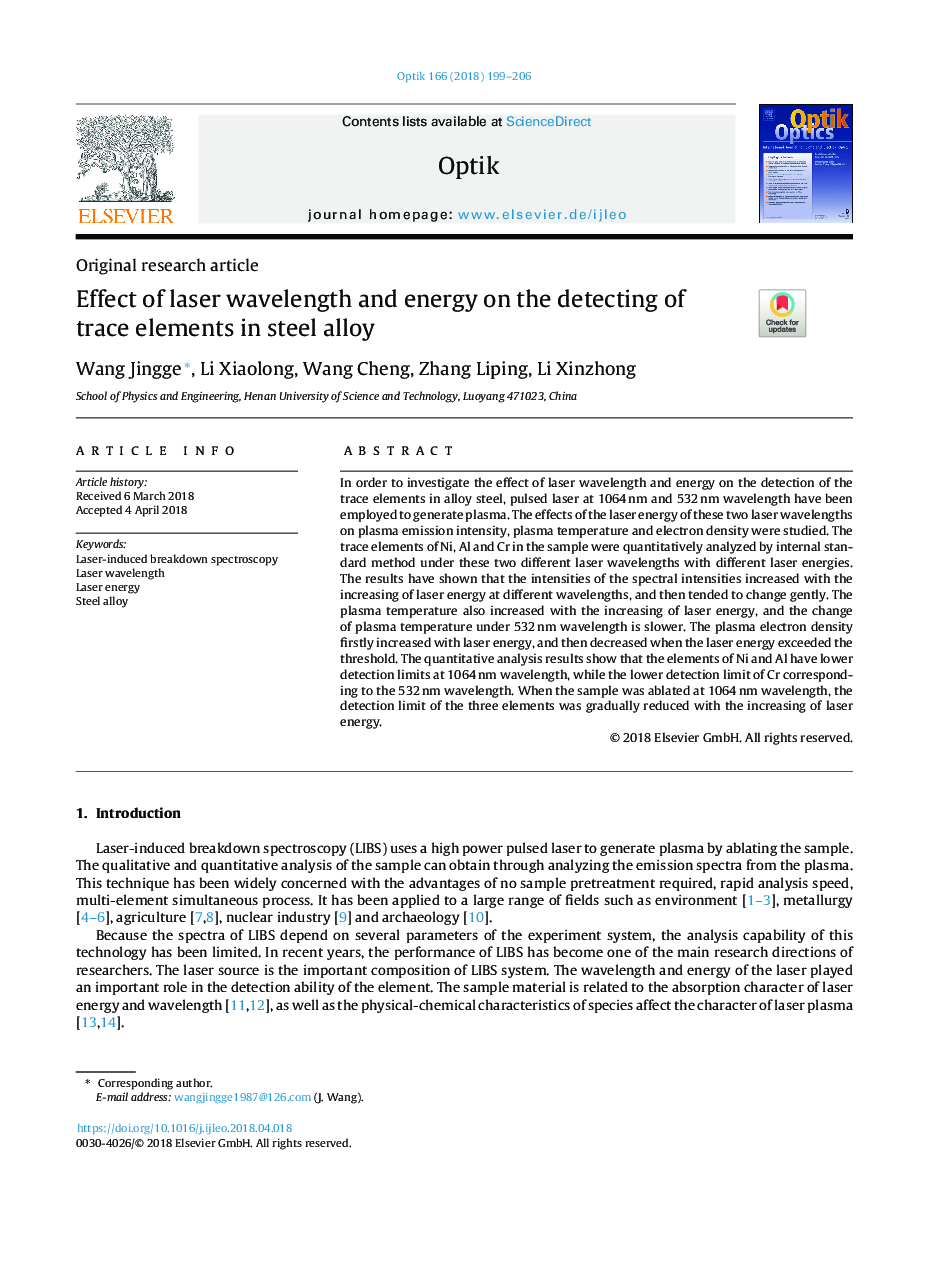| Article ID | Journal | Published Year | Pages | File Type |
|---|---|---|---|---|
| 7223653 | Optik - International Journal for Light and Electron Optics | 2018 | 8 Pages |
Abstract
In order to investigate the effect of laser wavelength and energy on the detection of the trace elements in alloy steel, pulsed laser at 1064â¯nm and 532â¯nm wavelength have been employed to generate plasma. The effects of the laser energy of these two laser wavelengths on plasma emission intensity, plasma temperature and electron density were studied. The trace elements of Ni, Al and Cr in the sample were quantitatively analyzed by internal standard method under these two different laser wavelengths with different laser energies. The results have shown that the intensities of the spectral intensities increased with the increasing of laser energy at different wavelengths, and then tended to change gently. The plasma temperature also increased with the increasing of laser energy, and the change of plasma temperature under 532â¯nm wavelength is slower. The plasma electron density firstly increased with laser energy, and then decreased when the laser energy exceeded the threshold. The quantitative analysis results show that the elements of Ni and Al have lower detection limits at 1064â¯nm wavelength, while the lower detection limit of Cr corresponding to the 532â¯nm wavelength. When the sample was ablated at 1064â¯nm wavelength, the detection limit of the three elements was gradually reduced with the increasing of laser energy.
Related Topics
Physical Sciences and Engineering
Engineering
Engineering (General)
Authors
Wang Jingge, Li Xiaolong, Wang Cheng, Zhang Liping, Li Xinzhong,
